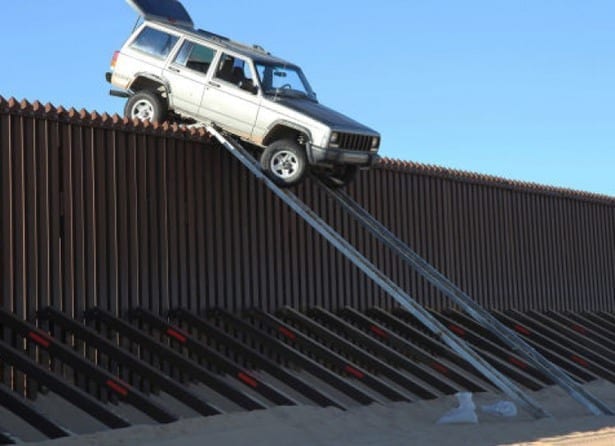
Human Trafficking Meets Human Smuggling at the Southern Border
The nexus of human trafficking and human smuggling, two related but different crimes, is in the spotlight as President Trump stresses the need for a border wall to stop human trafficking.
Human trafficking is defined by the U.S. State Department as “a crime involving the exploitation of an individual for the purposes of compelled labor or a commercial sex act through the use of force, fraud, or coercion.” Whereas the U.S. State Department says human smuggling, also known as migrant smuggling, “occurs when a person voluntarily enters into an agreement with a smuggler to gain illegal entry into a foreign country and is moved across an international border.” Whether voluntary or involuntary, both crimes endanger the powerless and raise human rights concerns.
It is important to note that the nexus of human trafficking and human smuggling accounts for a much smaller portion of trafficking in the U.S. than popularly believed, accounting for less than 10% of cases. This figure is derived from the Justice department’s statistic that 50% of trafficking victims in the U.S. are U.S. citizens or legal permanent residents (this statistic is mirrored in the state of Texas) and the IOM’s statistic that 79% of victims born outside the U.S., entered the country using legal ports of entry. Thus, accounting for U.S. nationals and foreign nationals entering through legal ports of entry, the overlap between the two crimes resides in the remaining 10% of cases.
This being said, the southern border is a dangerous place. Vulnerable people, who agree to be smuggled,whether they are trafficked or not, are often subjected to violence. According to a White House press release, “nearly 70% of migrants travelling north to the United States are victims of violence.” Since Mexico is the most frequent source country for foreign nationals identified through the National Human Trafficking Hotline,data suggest that the nexus of human smuggling and human trafficking, though possibly less than ten percent of cases, does center around the southern border.
Human trafficking and migrant smuggling can be linked, for example, through the high costs demanded by smugglers (up to $12,000 per person) for the journey across the border, leaving poor migrants vulnerable to a type of trafficking called “debt bondage.” This type of trafficking occurs when migrants agree to work off a debt they have accrued. Traffickers then continue to compound interest and other charges to what appears to be a simple employment agreement, trapping victims in an exploitative cycle of debt and forced labor. Even if migrants manage to pay the smugglers’ fees, there have been cases where they still end up in the hands of kidnappers across the border and trafficked.
There is a nation-wide debate going on as to whether a border wall will help curb crime in the borderlands. President Trump says a border wall will drastically decrease illegal border crossings, which will help curb human trafficking and kidnappings along the southern border. Opponents of the wall claim that these crossings will happen anyway because smugglers already take humans and cargo over existing walls and fences with ramps, drones and aircraft. Smugglers also travel under the border via extensive tunnel systems or around the southern border completely via boats, submarines, and missiles.

Image Source
Government efforts to help potential migrant trafficking victims already in place include awareness and preventative programs under several government departments. Use the following links to learn more:
- “No Te Engañes/Don’t Be Fooled is the voice of U.S. Customs and Border Protection in the global fight against human trafficking.”
- “The Blue Campaign is the unified voice for the U.S. Department of Homeland Security’s (DHS) efforts to combat human trafficking.
- ICE explains their role in combating human trafficking
Read more HTS blogs relating to the southern border:
- “Thousands of Unaccompanied Migrant Minors, Unaccounted for” Sonia Lunn, 2019
- “Protecting Unaccompanied Mexican Migrant Child Trafficking Victims” Ashley F, 2015
- “New Tool for Temporary Migrant Workers Seeks to Reduce Risk for Trafficking” Sarah F, 2015
- “When Drug Trafficking Becomes Human Trafficking” Michelle Lillie, 2014
Article by Sonia Lunn
